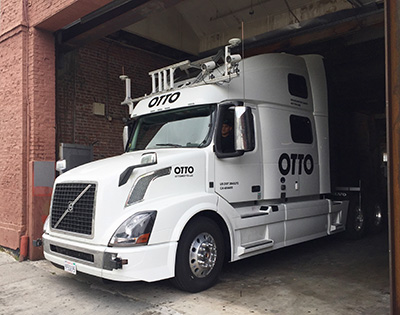CBRE research takes a close look at implications of self-driving and electric trucks
While the development of electric and autonomous vehicles is far from new, industrial real estate firm CBRE explained in recent research that these types of vehicles will have “direct effects” on logistics facilities.

The concept of self-driving, or autonomous, trucks continues to receive more heightened attention. And that is for a variety of reasons, including the difficulty carriers are having in filling trucks with drivers, an aging workforce for active drivers in the market, as well as the impact of fuel on over all trucking costs, among others.
The impact of fuel speaks directly to the recent announcement made by Tesla, regarding the announcement of its new Tesla Semi, which essentially is semi-autonomous in that while it still needs an actual driver, there are parts of driving the yet to be released vehicle that are autonomous, coupled with its electric capabilities that the company said accounts for a single charge moving 80,000 pounds roughly 500 miles.
While the development of electric and autonomous vehicles is far from new, industrial real estate firm CBRE explained in recent research that these types of vehicles will have “direct effects” on logistics facilities.
CBRE noted that self-driving vehicles have the potential to significantly expand the daily coverage that trucks can provide to a logistics operator, while relaxing current driver hours-of-service regulations, and, subsequently, increasing distance and coverage, which would bring “remote storage locations into play.”
What’s more, CBRE said the byproducts of this from a logistics perspective are significant in the form of lower delivery costs for consumers, with compression in industrial and distribution cost structures, and increased e-commerce sales.
And it outlined what it termed the main consequences of real estate related to autonomous trucking technology, including:
- lower transport costs, with supply chains needing fewer warehouses, which may lead to fewer but larger warehouses being built in remote locations;
- last-mile delivery facilities being crucial elements in the network, switching from diesel to electric, with these facilities needing to be able to receive large, or, semi-automated truck convoys and deploy electric city delivery vehicles. CBRE also said these sites will need to be equipped with extensive battery loading stations; and
- all warehouses will need a courtyard that allows automatic maneuvering, accommodating self-driving trucks going to and from facilities
“What is going on with things like Tesla’s announcement is now an obvious question, as the technology is advancing rapidly, with some large well-known players in and entering the space now, and our customers want to know what it will mean for their businesses,” said David Egan, CBRE head of industrial and logistics research in the Americas.”
From the property owner side, he explained that the impact is obvious as it helps to determine where a building will be located. This comes with a growing understanding that this technology is further along than anticipated, with businesses needing to prepare for large-scale automation processes sooner than later so that people are fully prepared for it.
When asked about a potential timeline for a wide scale rollout of self-driving trucks, Egan said that is somewhat difficult to pinpoint, even at a time when the driver shortage continues and the existing workforce continues to age.
“With any emerging technology, there is always a question of who will invest the money that will go towards improving it, as early-stage technology tends to work intermittently and at a high cost,” he said. “There has to be some impetus to go ahead and put research investment dollars behind it to improve the technology. The trucking business is crucially important to the economy and getting very expensive, with the labor component growing faster than most. If you cannot afford that, then the next step is labor automation solutions. It is early on, but the technology from a trucking point of view is further along than one would expect.”
These trucks would work well on U.S. highways, which are perfectly mapped, he said, and when layering in technology developments like radar capabilities for things like visibility, he said, in his opinion, an automated truck is probably safer than one with a person driving it.
But the regulatory side and the broader cultural acceptance of self-driving vehicles are more limiting factors than the technology, he said.

Article Topics
News & Resources
Latest in Materials Handling
Registration open for Pack Expo International 2024 Walmart chooses Swisslog AS/RS and software for third milk processing facility NetLogistik partners with Vuzix subsidiary Moviynt to offer mobility solutions for warehouses Materials Handling Robotics: The new world of heterogeneous robotic integration BSLBATT is looking for new distributors and resellers worldwide Lucas Watson appointed CSO for Körber’s Parcel Logistics business in North America Hyster recognizes Dealers of Distinction for 2023 More Materials HandlingAbout the Author
Subscribe to Materials Handling Magazine

Find out what the world's most innovative companies are doing to improve productivity in their plants and distribution centers.
Start your FREE subscription today.
April 2024 Modern Materials Handling

Latest Resources










